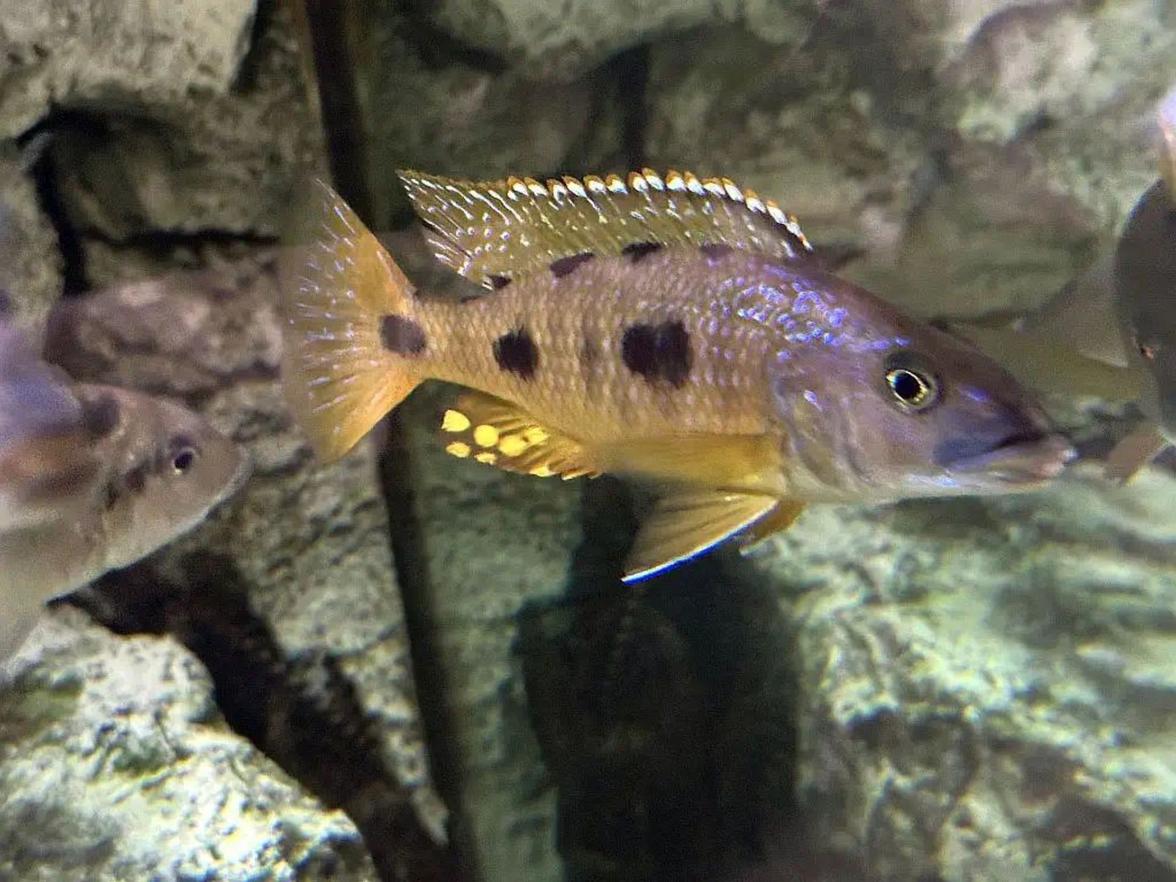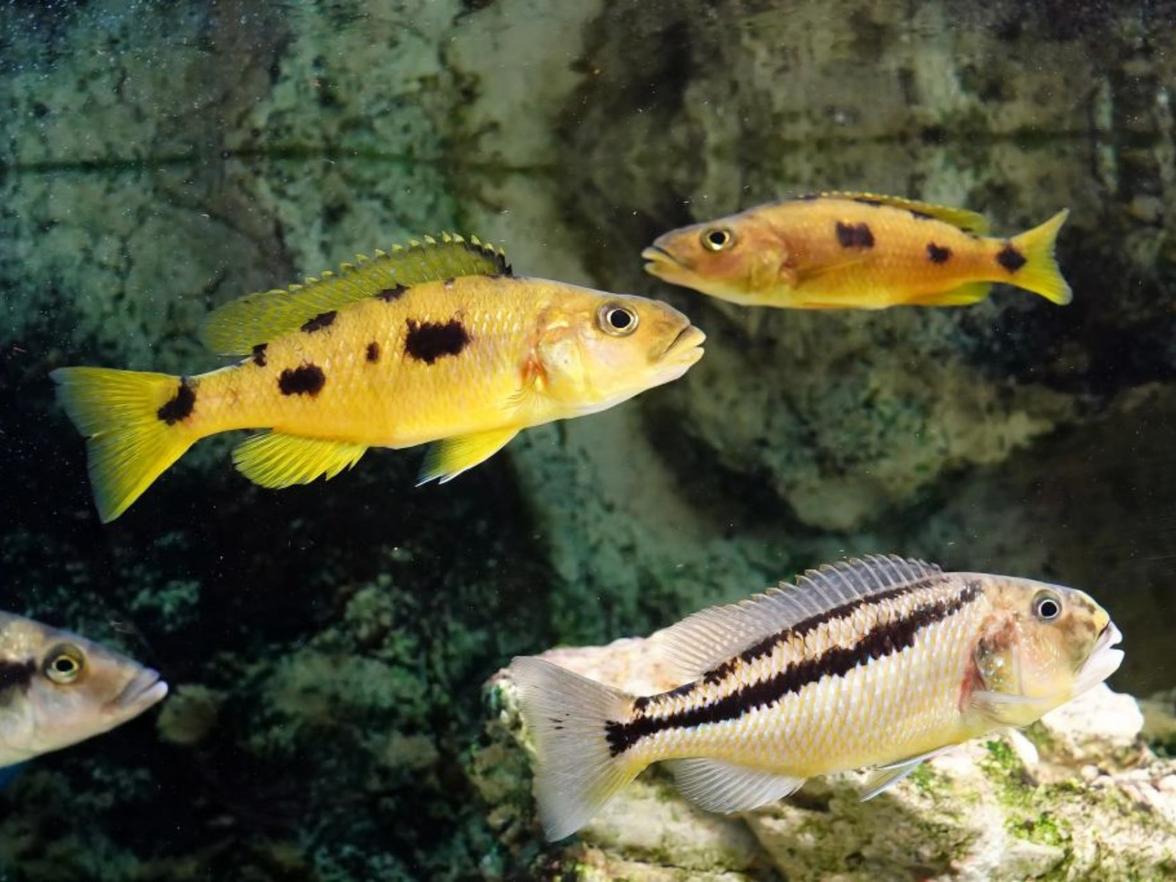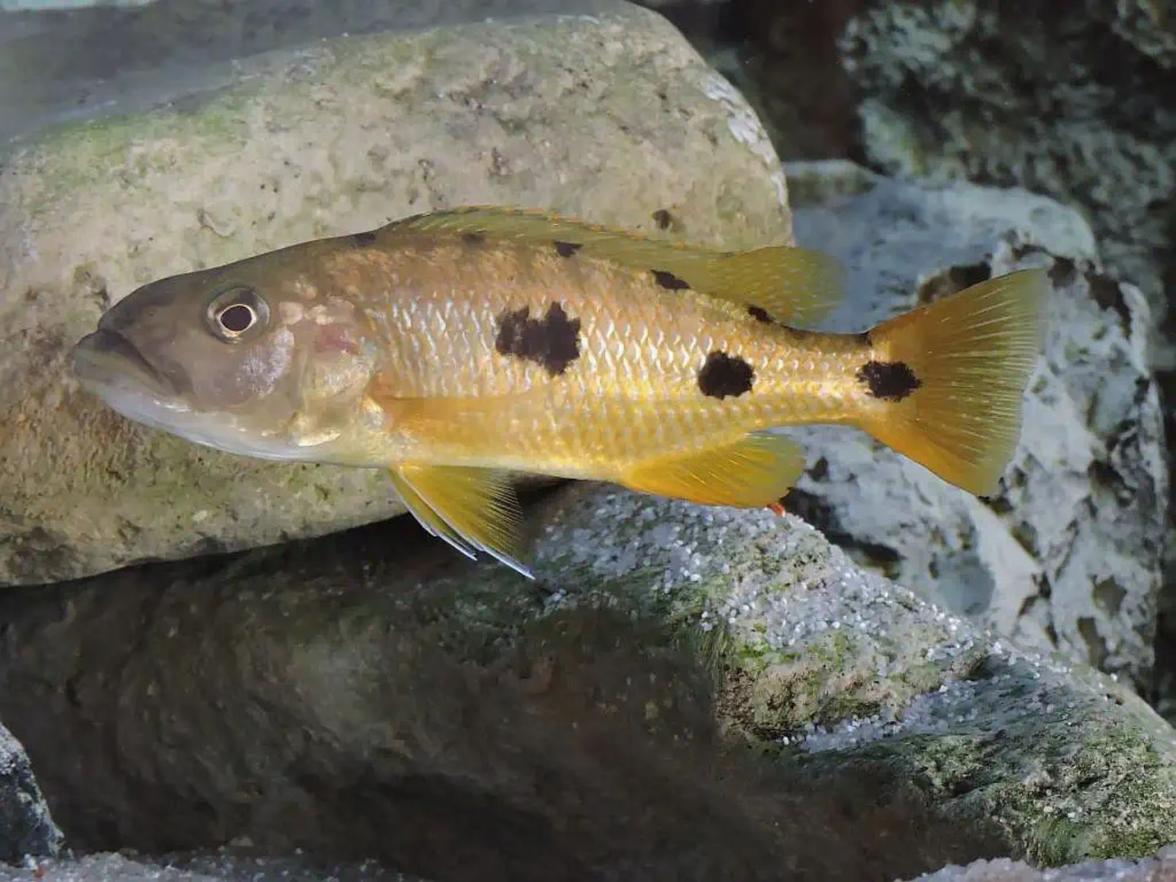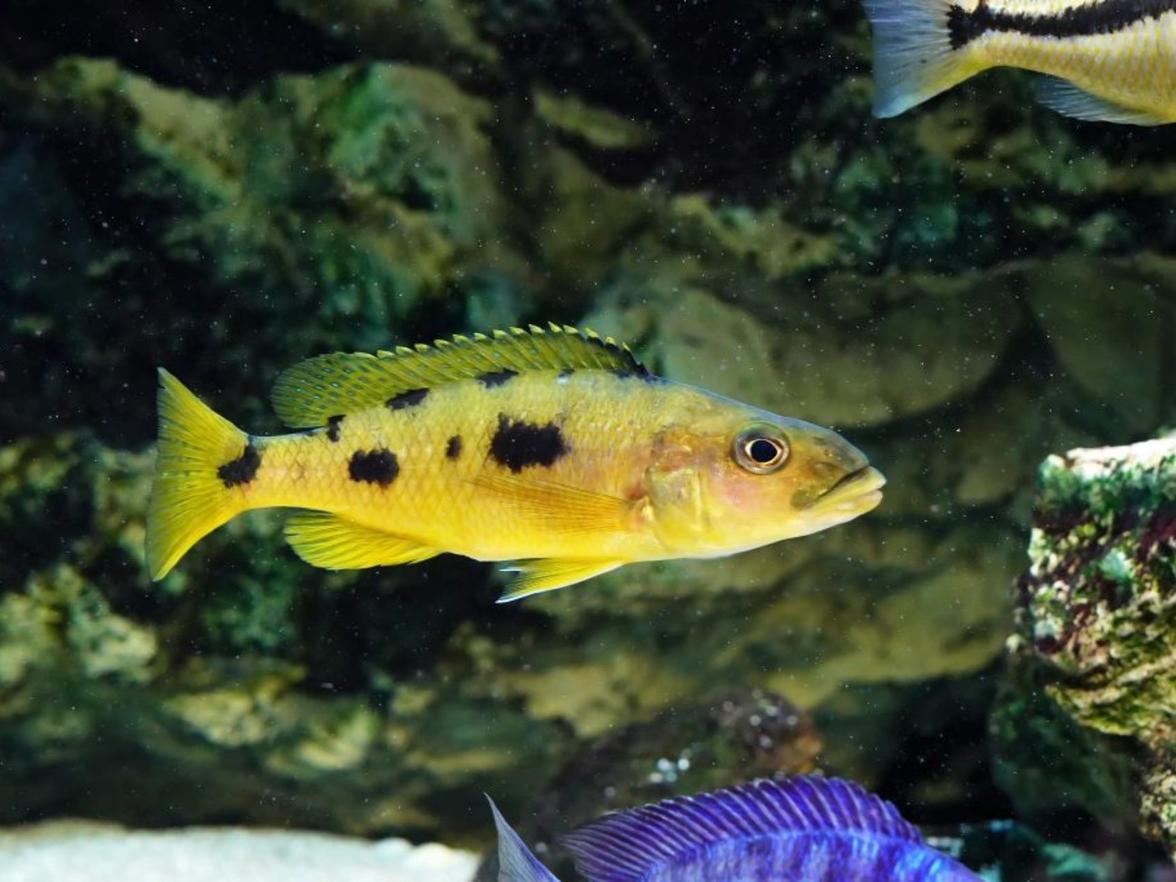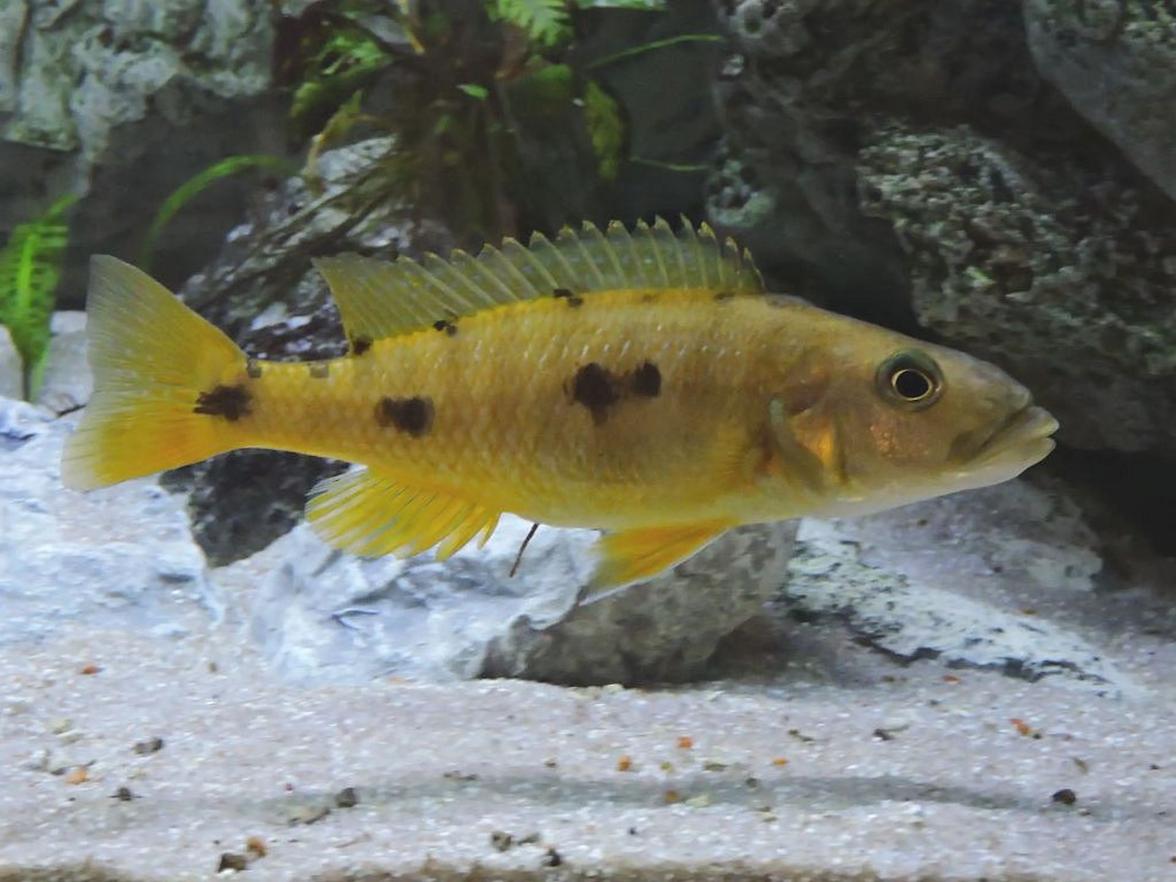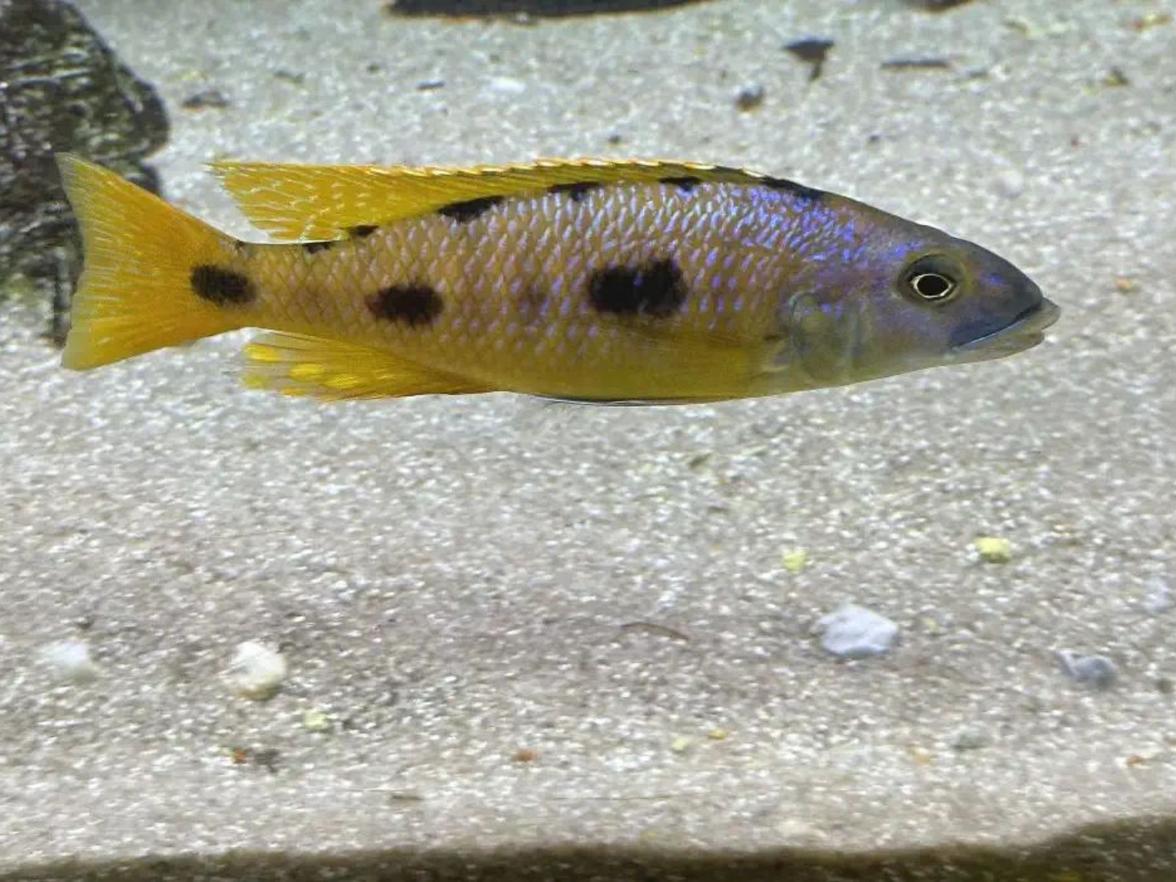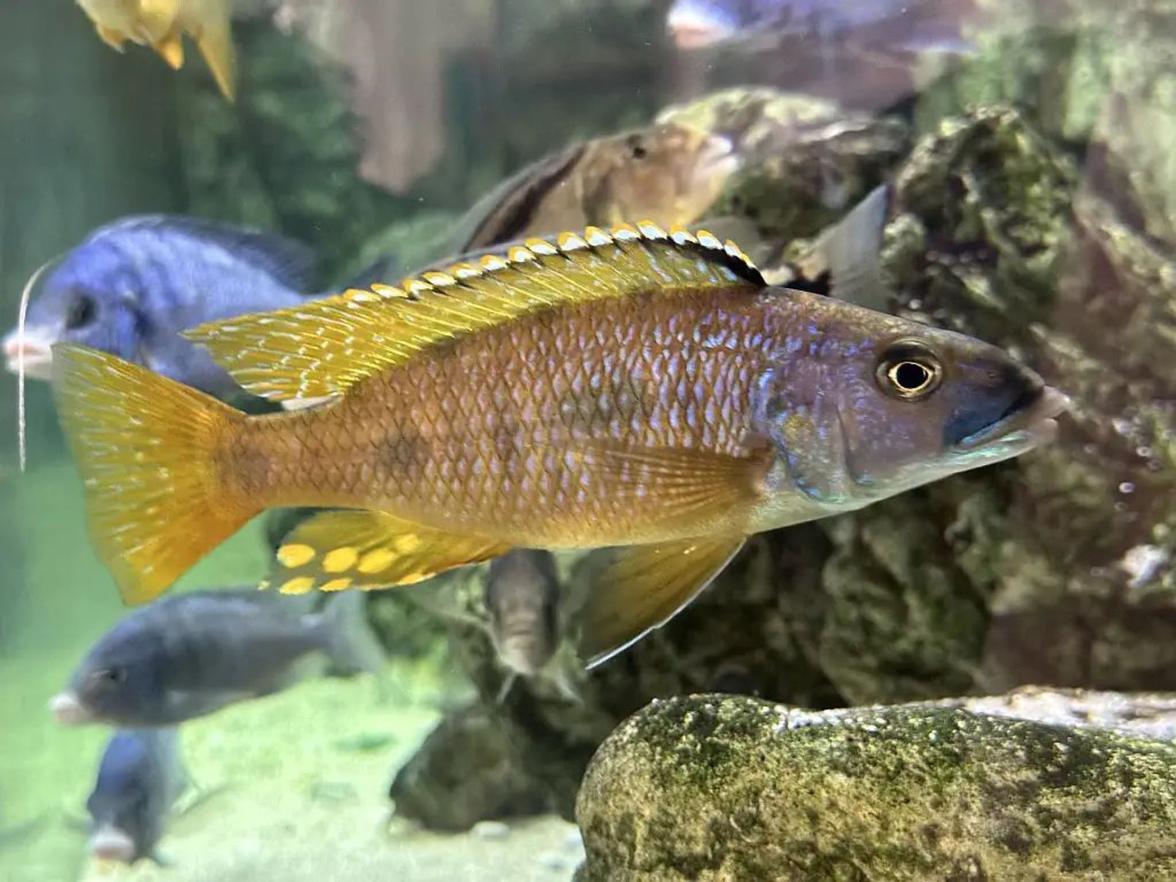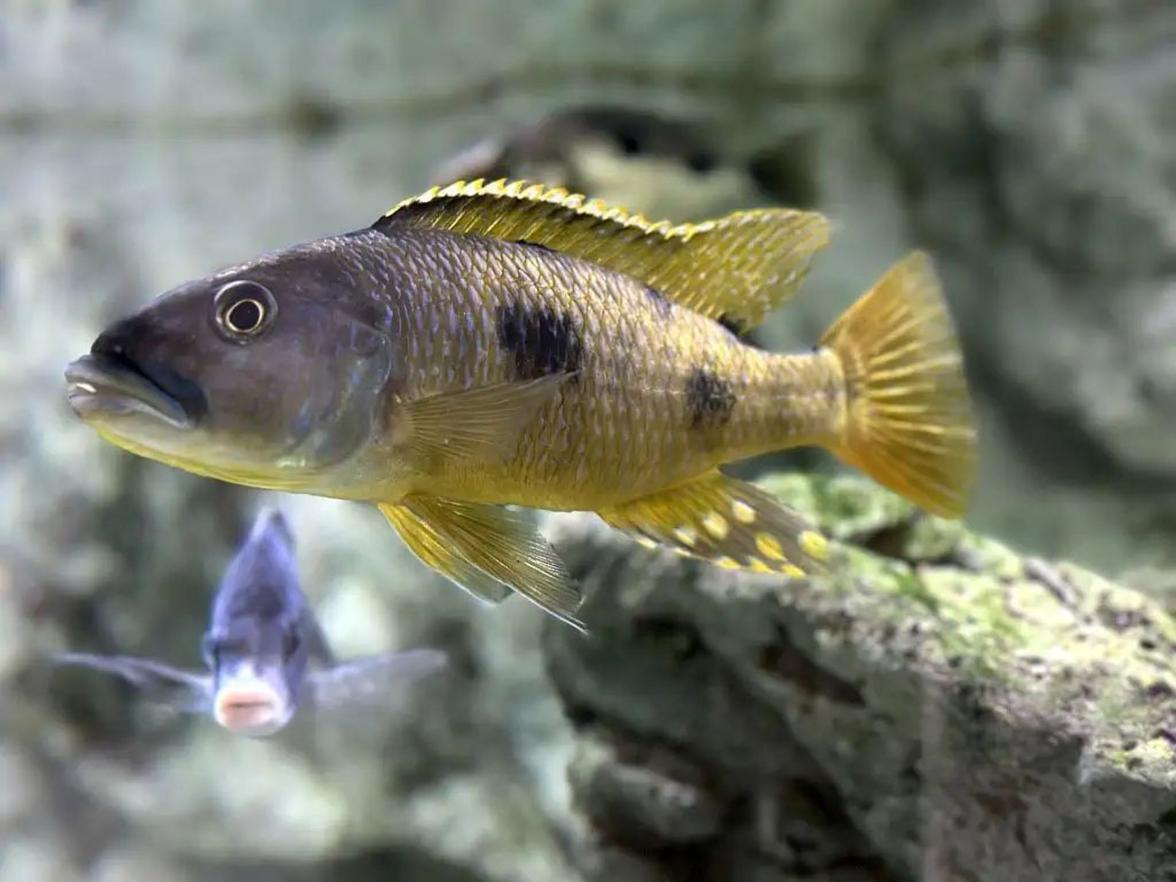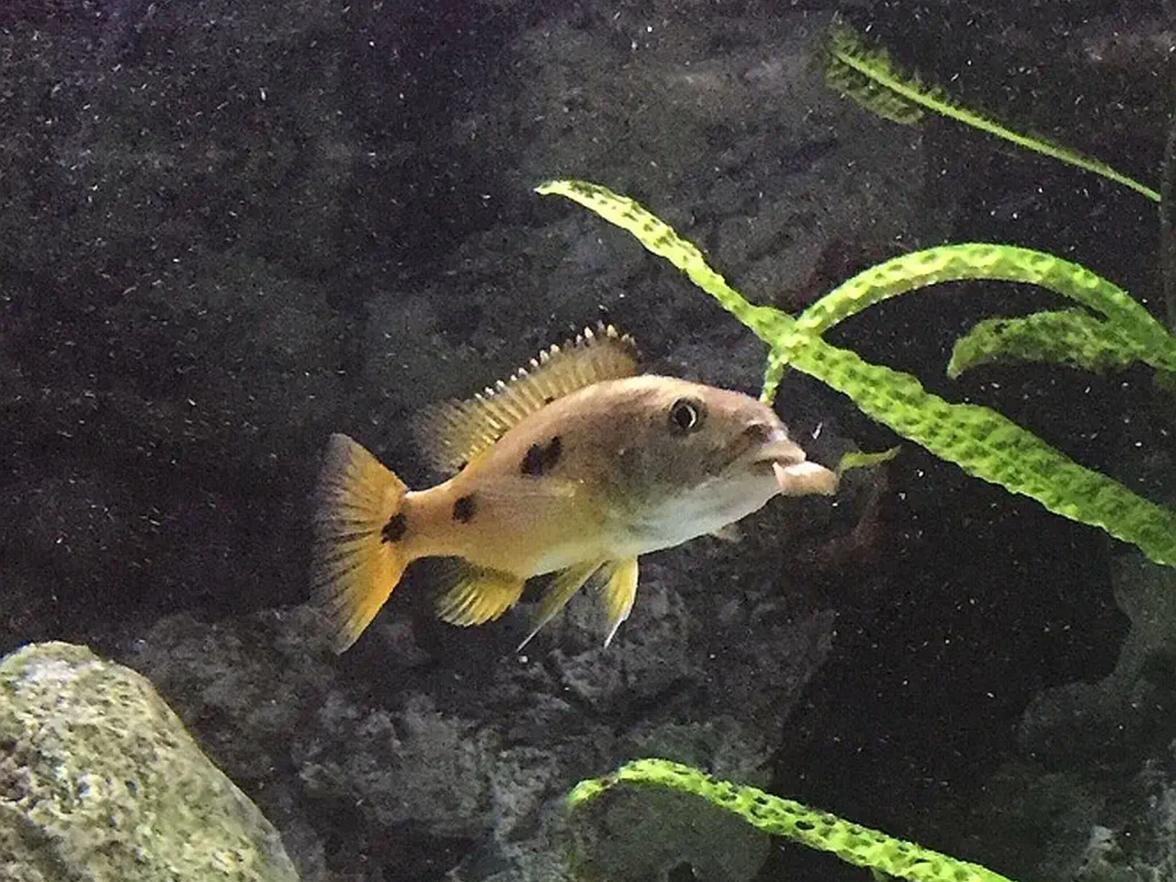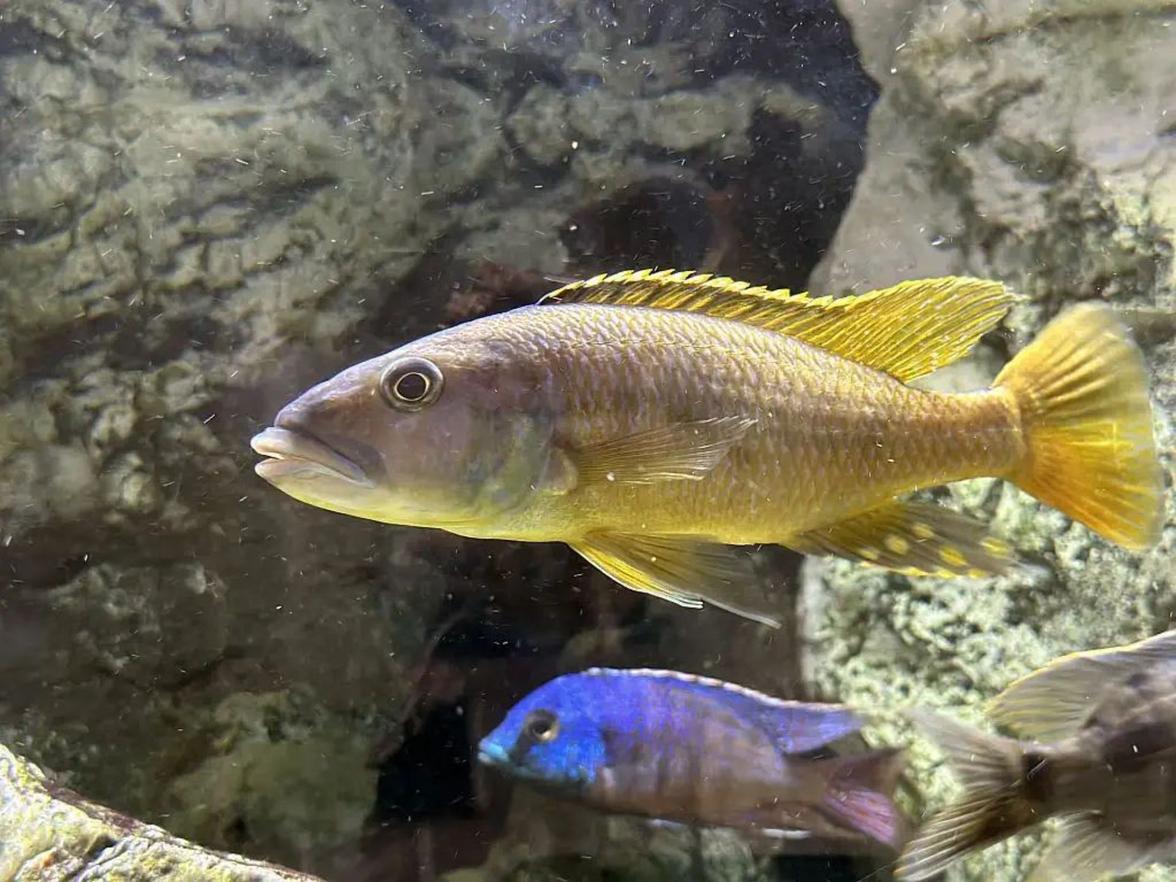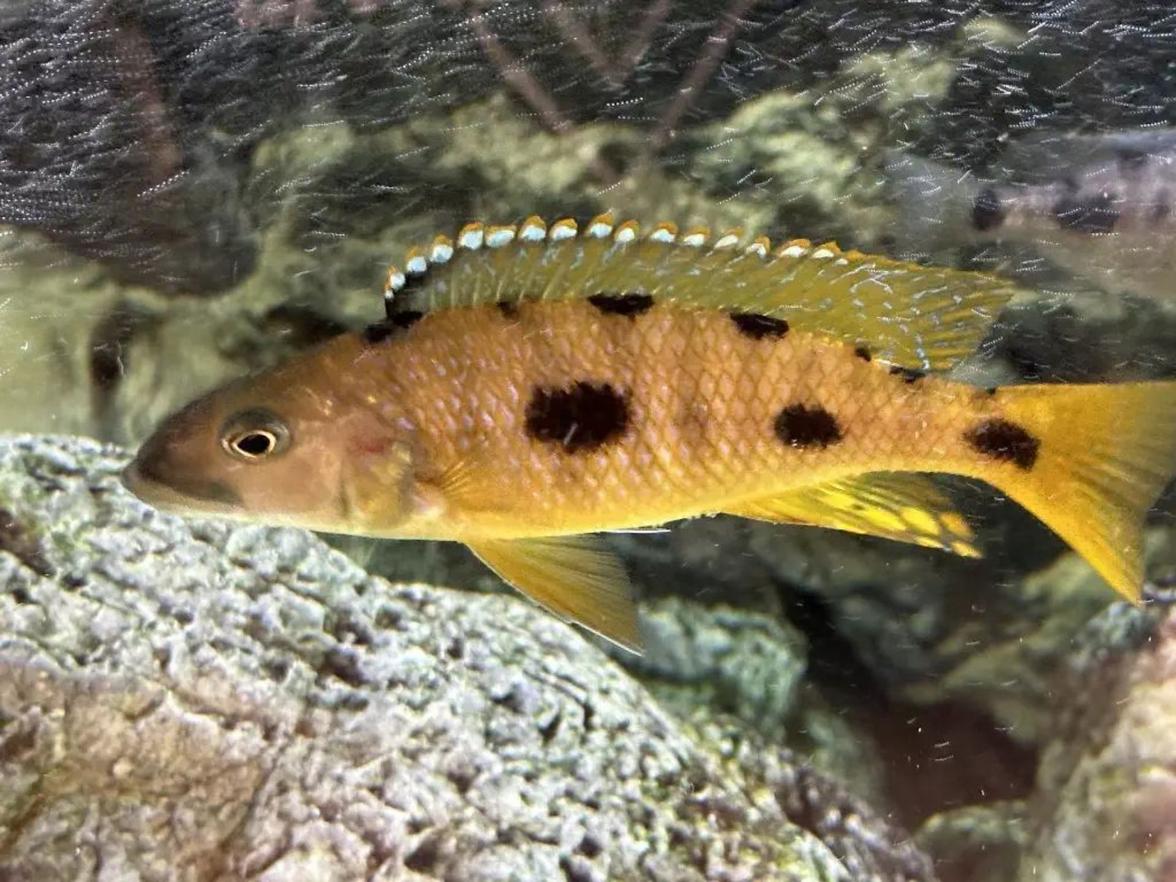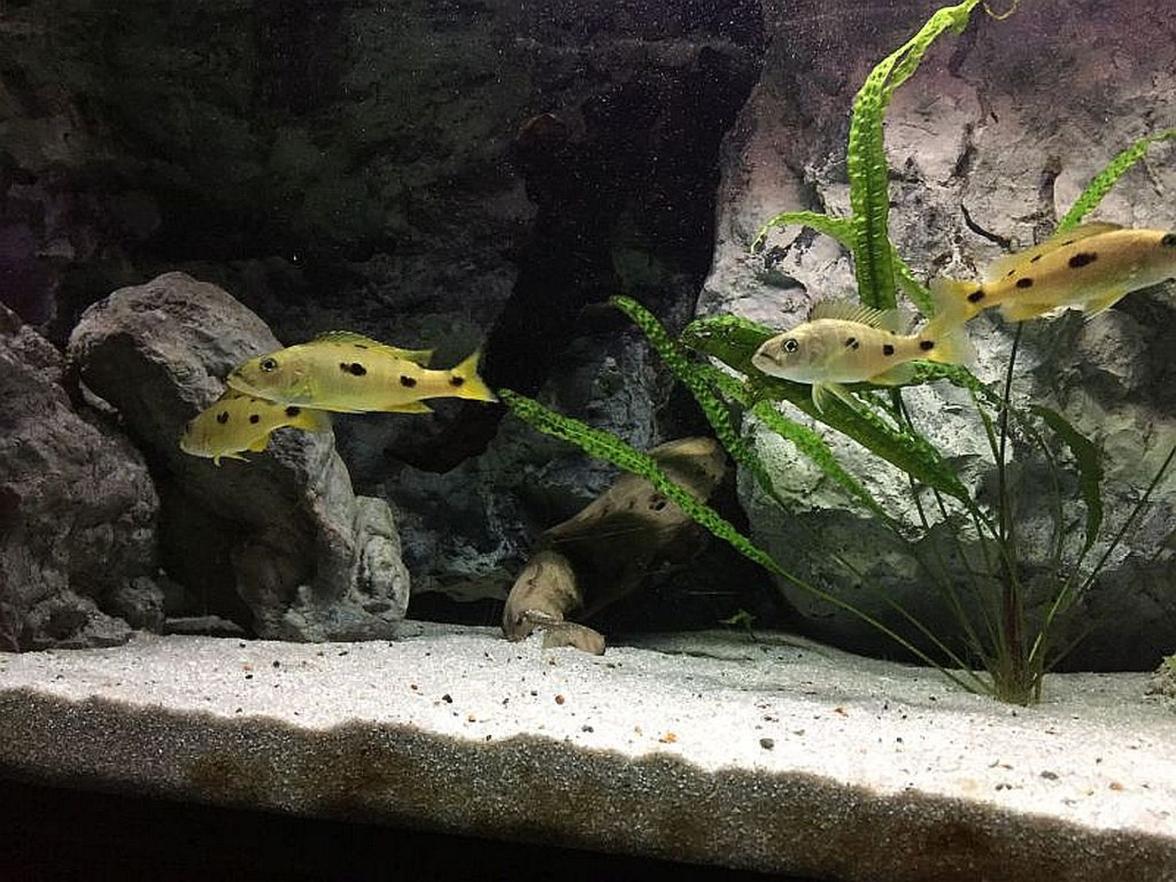My experiences with the Malawi lake predator – Exochochromis anagenys (Oliver, 1989)
Profile: Exochochromis anagenys (Oliver, 1989)
Size of males: approx. 25-30 cm
Size of females: approx. 20-25 cm
Coloration, Differences:
Males and females are almost equally colored.
Gold yellow with three black spots on both sides.
Males grow significantly larger. With large yellow egg spots on the anal fin and bluish head.
As juveniles, the sexes are very difficult to distinguish.
Minimum tank size:
from 250 x 70 x 50cm, from 1,000l
Diet:
Predator, primarily feeds on juvenile fish that it actively hunts.
In the aquarium, they accept flakes, granules, frozen, and live food.
Habitat in Lake Malawi:
The species is widely distributed throughout the lake and hunts over sandy areas and rocks for juvenile fish.
Reproduction:
Maternal mouthbrooder
My experiences with Exochochromis anagenys (Oliver, 1989)
Keeping in the aquarium:
This species is one of my favorite species from Lake Malawi.
Since these fish are quite large and very active swimmers and must be kept in a harem, the aquarium must have a minimum size of approx. 250 x 70 x 60 cm (approx. >=1,000l).
The tank can be designed as a Malawi transition zone. Larger open sandy areas with rocks or rock piles placed in between. The species requires a larger free swimming space in the tank.
The animals are fish predators, hunting and eating smaller fish in the lake. The offspring of other species in the tank are therefore at least endangered!
The species is best kept as a harem of 1M / 3F. In larger aquariums, larger groups of the animals also work.
Diet in the aquarium:
The fish eat juvenile fish that they actively hunt in the lake. Therefore, a carnivorous, protein-rich diet for the animals is necessary. They accept flakes and granule food. Frozen and live food can also be given occasionally.
Please feed sparingly and with high-quality food (low carbohydrates).
Behavior in the aquarium (my experiences):
The species, where females and males look very similar, is a rather calmer Malawi predator in the aquarium, that gets along well with other species and is not aggressive. During courtship, it digs a small sand pit, usually under or next to a large rock. Here, the behavior of the male changes. The calm hunter becomes a somewhat rough character, which defends a minimum of 200 cm length in the aquarium fiercely. Moreover, he hunts his females very persistently, intensely, and until they are ready to lay eggs and swim into his pit. The courtship and hunting can last several days.
I have been able to obtain about 50 juvenile fish per brood several times, raise them, and give them away. The loss was very low, only about 3-5 juvenile fish on average.
The females brood for about 4 weeks and then release the fry at about 10-12 mm in size. The little ones are not further cared for and are left to fend for themselves from the first day after being released.
The fish are gold yellow in color and have three black spots on the left and right sides, which they can completely hide depending on their mood, making them entirely gold yellow. The dominant male also becomes bluish on the head, which then transitions into gold yellow. In my opinion, they are extremely beautiful and elegant fish.
Co-habitation in the aquarium:
A stocking with larger, not too sensitive fish must be chosen in the tank. However, the other fish should not be too rough and aggressive.
The species is, like many Malawi predators, quite a big "sensitive" fish, and they do not like changes in stocking, setup, or constant attacks from rougher other fish, reacting quickly with stress and taking it badly. This can possibly lead to diseases if it becomes prolonged and too severe.
Due to their colors and behavior, they are a real eye-catcher in any non-Mbuna Malawi aquarium. Even in a larger group in a suitably designed species tank, they are a highlight.
My conclusion:
A very beautiful and also special Malawi predator species. With their gold yellow, shiny coloration, the bluish head of the males, and their slim, torpedo-shaped body, they represent a true highlight in the aquarium.
They are very fast swimmers, so one has to be careful when opening the aquarium that they do not jump out.
As mentioned, one of my favorite species from Lake Malawi. I have been keeping them for many years. However, one must ensure that they obtain good, stable offspring; unfortunately, there are also many overbred fish of this species available on the market! With which one usually only encounters significant problems in the aquarium! This can lead to large losses and casualties that cannot be remedied. There are also completely silver-colored fish of the species, which I do not find as appealing. The species is rarely found in Lake Malawi, and wild catches hardly come from Africa anymore.
